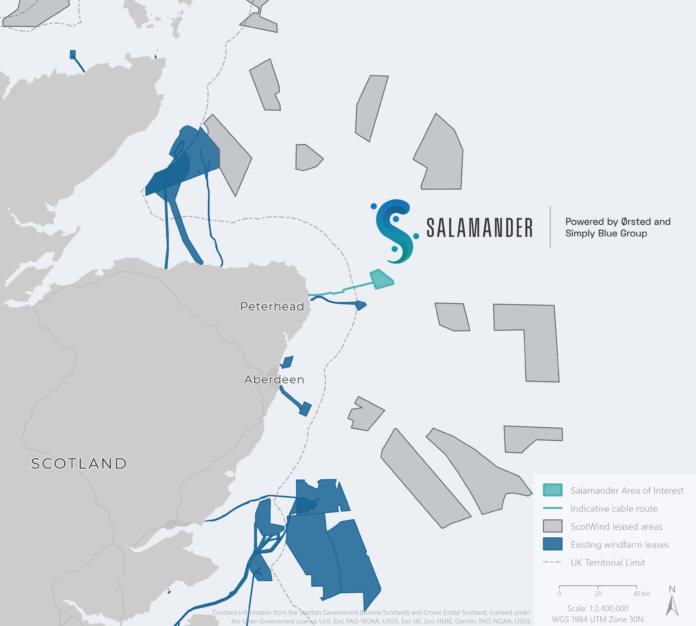The Salamander floating offshore wind project has completed the geophysical and environmental survey works for 2022 at the site off the east coast of Scotland, marking a milestone for the development. Survey contractor Ocean Infinity conducted the offshore survey using the Northern Franklin vessel.
Salamander, a joint venture between Simply Blue Group, Ørsted and Subsea7, will help to ensure the U.K. government’s target of delivering 5 GW of operational floating offshore wind by 2030.
The project, located 35 kilometers off Peterhead, is designed to provide the Scottish supply chain with an early capacity development opportunity, enabling it to play a much greater role in subsequent large-scale floating offshore wind buildout. The project will deploy floating offshore wind technologies to support the cost reduction and learning journey needed for the commercial deployment of floating offshore wind.
The scope covered reconnaissance of the offshore array area and export cable route corridor using both geophysical and benthic habitat survey techniques. The objective was to establish a baseline ground model which will be developed as the project matures.
“This is a key landmark for the project as the survey results will be used to support engineering studies including mooring design and cable burial assessments,” says Huw Bell, Salamander’s project director. “Benthic survey data will be analyzed onshore with results supporting the Environmental Impact Assessment and the overall consenting process. The working relationship and quality of work with Ocean Infinity has been excellent throughout. In what’s turned out to be quite a dynamic scope, the operations have been completed safely with no harm to personnel or the environment. This really has been a textbook performance by all involved.”
Salamander is intended to be progressed through the track of Crown Estate Scotland’s Innovation and Targeted Oil and Gas (INTOG) leasing round. The INTOG round will grant seabed leases through a bidding process, which will be split into two pots – one for smaller scale innovation projects of less than 100 MW and one for larger projects linked to oil and gas infrastructure.




